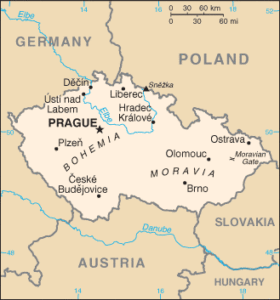 Jews first arrived in the current Czech Republic (originally the regions of Bohemia, Moravia, and Silesia) in the year 995, when they were granted permission to reside there after aiding the Byzantine Empire in its fight against the local Bulgarian pagans in what is now Poland, Slovakia, Austria, and Hungary. Though initially fairly well accepted in the region, the Crusades carried with them a stream of anti-Semitic incidents. By the mid-thirteenth century conditions slowly began to improve for the Jews in Bohemia, Moravia, and Silesia as the Crusades came to a close. Yet, the late fourteenth and fifteenth centuries witnessed a resurgence of fierce anti-Semitism which included a massive pogrom in 1389, the spread of the blood libel and the subsequent burning of Jews at the stake, and the complete expulsion of the Jewish population in 1541 when the Habsburg dynasty came to power under Austrian Archduke Ferdinand.
Jews first arrived in the current Czech Republic (originally the regions of Bohemia, Moravia, and Silesia) in the year 995, when they were granted permission to reside there after aiding the Byzantine Empire in its fight against the local Bulgarian pagans in what is now Poland, Slovakia, Austria, and Hungary. Though initially fairly well accepted in the region, the Crusades carried with them a stream of anti-Semitic incidents. By the mid-thirteenth century conditions slowly began to improve for the Jews in Bohemia, Moravia, and Silesia as the Crusades came to a close. Yet, the late fourteenth and fifteenth centuries witnessed a resurgence of fierce anti-Semitism which included a massive pogrom in 1389, the spread of the blood libel and the subsequent burning of Jews at the stake, and the complete expulsion of the Jewish population in 1541 when the Habsburg dynasty came to power under Austrian Archduke Ferdinand.
The Jews were eventually allowed to return after the expulsion, but even though Habsburg rule was among the most liberal in all of Europe, a law was enacted in 1551 requiring Jews to wear distinctive clothing to separate them from the Christian population. Mostly Jews lived in ghettoes but during the reigns of King Rudolf II (1576-1611) and King Mathias (1611-1619), Jews were allowed to live outside the ghetto walls, no longer required to wear distinctive clothing, permitted to travel freely and engage in trade, and granted additional civil rights. Jews were permitted to own land and rose to power and prominence. Many Jews fleeing persecution in neighboring countries immigrated to the region.
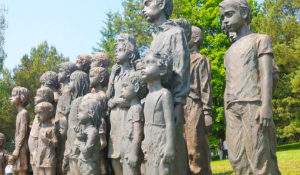 Anti-Semitism increased and there were pogroms. When Maria Theresa became queen in 1745 she immediately expelled the Jews of Prague. When they were allowed to return three years later they had to pay exorbitant taxes. Jewish life under her son, Josef II once again prospered, and Jews were welcomed into mainstream society. In 1781 Emperor Joseph II issued the Tolerance Edict, which gave Jews freedom of occupation, encouraged them to enter public life and allowed them to study at institutions of higher learning, but encouraged them to be secular. In 1848 there were some 10,000 Jews living in Prague and pogroms became a frequent occurrence. By 1867 Jews had full emancipation.
Anti-Semitism increased and there were pogroms. When Maria Theresa became queen in 1745 she immediately expelled the Jews of Prague. When they were allowed to return three years later they had to pay exorbitant taxes. Jewish life under her son, Josef II once again prospered, and Jews were welcomed into mainstream society. In 1781 Emperor Joseph II issued the Tolerance Edict, which gave Jews freedom of occupation, encouraged them to enter public life and allowed them to study at institutions of higher learning, but encouraged them to be secular. In 1848 there were some 10,000 Jews living in Prague and pogroms became a frequent occurrence. By 1867 Jews had full emancipation.
 Following the World War 1, a new state was formed in the region by the name of Czechoslovakia, which included four historic territories: Bohemia, Moravia, Slovakia, and Ruthenia to the east. Czechoslovakia between the two world wars was a model of Western democracy. Its authorities recognized all the rights of the Jewish minority living within its borders, which numbered about 356,000 people, who enjoyed equal rights and a period of great prosperity. The day after September 29th,1938, when the Munich Accords were signed, Neville Chamberlain showed off his peace agreement with Hitler. At the same time, the Nazi army invaded the Sudetenland in Czechoslovakia.
Following the World War 1, a new state was formed in the region by the name of Czechoslovakia, which included four historic territories: Bohemia, Moravia, Slovakia, and Ruthenia to the east. Czechoslovakia between the two world wars was a model of Western democracy. Its authorities recognized all the rights of the Jewish minority living within its borders, which numbered about 356,000 people, who enjoyed equal rights and a period of great prosperity. The day after September 29th,1938, when the Munich Accords were signed, Neville Chamberlain showed off his peace agreement with Hitler. At the same time, the Nazi army invaded the Sudetenland in Czechoslovakia.
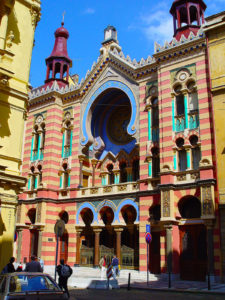 All Jews were expelled from Bohemia and Moravia and their belongings were confiscated. By October 1941 some 27 thousand Jews left the Czech lands, becoming refugees throughout the rest of the country. The second phase began on November 24th, when 122 trains left the protectorate carrying 73,608 Jews to Theresienstadt Ghetto and from there to the gas chambers. When Red Cross delegation entered Theresienstadt Ghetto, the Nazis, portrayed the ghetto as a model of enlightenment and humanitarianism: They filled the ghetto with fake cafes, model schools, playgrounds and vegetable gardens, and even produced a propaganda film painting the ghetto as a pastoral country resort. As soon as the production ended most of the Jews including many children, were sent to the gas chambers of Auschwitz.
All Jews were expelled from Bohemia and Moravia and their belongings were confiscated. By October 1941 some 27 thousand Jews left the Czech lands, becoming refugees throughout the rest of the country. The second phase began on November 24th, when 122 trains left the protectorate carrying 73,608 Jews to Theresienstadt Ghetto and from there to the gas chambers. When Red Cross delegation entered Theresienstadt Ghetto, the Nazis, portrayed the ghetto as a model of enlightenment and humanitarianism: They filled the ghetto with fake cafes, model schools, playgrounds and vegetable gardens, and even produced a propaganda film painting the ghetto as a pastoral country resort. As soon as the production ended most of the Jews including many children, were sent to the gas chambers of Auschwitz.
In time Theresienstadt Ghetto came to symbolize the full horror of the Holocaust, because of the monstrous pretense created by the Nazis there to delude the enlightened world. Between 1941-1945 some 140,000 Jews were forcibly sent to Theresienstadt. By the end of the war, only 19,000 of them survived. Some 263,000 Jews of Czechoslovakia were murdered during the war, of them 71,000 from Bohemia and Moravia. Only about 30,000 Jews were alive to recreate Jewish life in Bohemia and Moravia by 1945-1946.
Some of the people who saved Jews includes: Marie Schmolka, Alena Hájková, Victor Kugler, Přemysl Pitter, and Antonin Kalina.
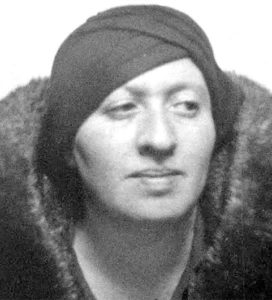 Marie Schmolka was one of Prague’s key organisers helping Jewish refugees fleeing the Nazis, and also helped arrange transports of children to the UK that saved hundreds of lives. Her involvement with refugees started in 1933. She built alliances, found funding and distributed tasks.
Marie Schmolka was one of Prague’s key organisers helping Jewish refugees fleeing the Nazis, and also helped arrange transports of children to the UK that saved hundreds of lives. Her involvement with refugees started in 1933. She built alliances, found funding and distributed tasks.
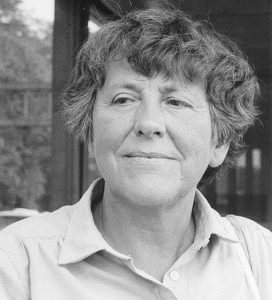 Alena Hájková was part of the Přehledy resistance group, formed in 1943 . When the transports to Theresienstadt began in 1941, Hájková and her family helped the deportees. Later, the group helped Jews avoid transport under a false identities. She visited Terezín ghetto, where she smuggled in food and organized papers for escapees.
Alena Hájková was part of the Přehledy resistance group, formed in 1943 . When the transports to Theresienstadt began in 1941, Hájková and her family helped the deportees. Later, the group helped Jews avoid transport under a false identities. She visited Terezín ghetto, where she smuggled in food and organized papers for escapees.
 Victor Kugler became a Dutch citizen in May 1938. In 1940, this allowed him to prevent the Nazi confiscation Otto Frank’s business, which he had bought. From 1942-1944, he concealed eight people, including Anne Frank, in a sealed-off annex in their office premises on Amsterdam’s Prinsengracht. He was arrested by the Gestapo but escaped during a bombing raid.
Victor Kugler became a Dutch citizen in May 1938. In 1940, this allowed him to prevent the Nazi confiscation Otto Frank’s business, which he had bought. From 1942-1944, he concealed eight people, including Anne Frank, in a sealed-off annex in their office premises on Amsterdam’s Prinsengracht. He was arrested by the Gestapo but escaped during a bombing raid.
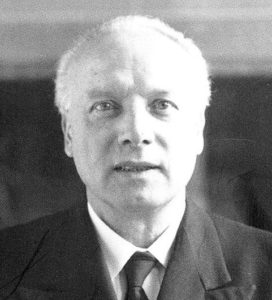 Přemysl Pitter founded the Milíč House in 1922 and in 1938, set up a sanatorium for children of refugees. Some left Czechoslovakia in the kindertransport. Milíč House became the centre of secret support for persecuted Jewish families. Pitter was interrogated by the Gestapo, fortunately he was released. Immediately after the end of the war, Pitter initiated the “Operation Castles”, to help children coming back from the concentration camps. Pitter tried to arrange the reunion of the children with their parents or relatives.
Přemysl Pitter founded the Milíč House in 1922 and in 1938, set up a sanatorium for children of refugees. Some left Czechoslovakia in the kindertransport. Milíč House became the centre of secret support for persecuted Jewish families. Pitter was interrogated by the Gestapo, fortunately he was released. Immediately after the end of the war, Pitter initiated the “Operation Castles”, to help children coming back from the concentration camps. Pitter tried to arrange the reunion of the children with their parents or relatives.
 Antonin Kalina was arrested by the Nazis in 1939 as a Communist and imprisoned in Buchenwald. Around 100,000 people came to Buchenwald in 1944-1945. Many of them were children. To protect the most vulnerable prisoners from the harsh conditions of the camp, it housed them in buildings which it claimed was a quarantine area for prisoners with diseases such as typhus. The Germans did not like to enter this area for fear of disease. Kalina used his position in the camp’s resistance to become an elder of Block 66, which people started to call the Kinderblock. Kalina, relocated the boys to the Bloc. They made their stay in the camp less uncomfortable and spared the younger children the hard work and physical abuse. Kalina got them better blankets and, sometimes, additional food. He also organised lessons for them. Kalina falsified the documents of the Jewish boys and hid their Yellow badges. When SS men came for the prisoners, Kalina persuaded them that there were no Jews in the Block.
Antonin Kalina was arrested by the Nazis in 1939 as a Communist and imprisoned in Buchenwald. Around 100,000 people came to Buchenwald in 1944-1945. Many of them were children. To protect the most vulnerable prisoners from the harsh conditions of the camp, it housed them in buildings which it claimed was a quarantine area for prisoners with diseases such as typhus. The Germans did not like to enter this area for fear of disease. Kalina used his position in the camp’s resistance to become an elder of Block 66, which people started to call the Kinderblock. Kalina, relocated the boys to the Bloc. They made their stay in the camp less uncomfortable and spared the younger children the hard work and physical abuse. Kalina got them better blankets and, sometimes, additional food. He also organised lessons for them. Kalina falsified the documents of the Jewish boys and hid their Yellow badges. When SS men came for the prisoners, Kalina persuaded them that there were no Jews in the Block.
Upon the rise of the Communist regime, the Jewish community was cut off from its counterparts around the world, but early in this period, between 1948-1950, some 26,000 Jews emigrated 19,000 of these to the newly established State of Israel. The Jewish Museum in Prague and Czech Jewish communities have carried out systematic documentation of Jewish heritage sites and have spearheaded a number of restoration projects: more than 65 synagogues have been restored since the Velvet revolution and fall of communism in 1989, when democracy was reinstated.
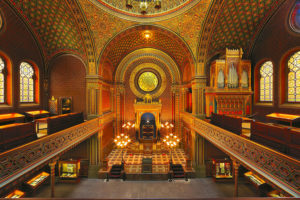 During World War II the Nazis wished to preserve a future site as the “Exotic Museum of the extinct race”, meant to preserve the heritage of the people they meant to annihilate upon completion of the “Final Solution”. The Nazis believed that the museum would serve to aid anti-Semitic propaganda and justify their actions. Jewish artifacts were collected and looted with typical German efficiency from 153 communities. The Jewish Museum in Prague’s inventory included some 100,000 works of art.
During World War II the Nazis wished to preserve a future site as the “Exotic Museum of the extinct race”, meant to preserve the heritage of the people they meant to annihilate upon completion of the “Final Solution”. The Nazis believed that the museum would serve to aid anti-Semitic propaganda and justify their actions. Jewish artifacts were collected and looted with typical German efficiency from 153 communities. The Jewish Museum in Prague’s inventory included some 100,000 works of art.
The number of Jews living today in the Czech Republic is estimated at 3,900 in 2010. Prague has the most vibrant Jewish life in the entire country; several synagogues operate on regular basis; there are three kindergartens, and a Jewish day school. Three different Jewish magazines are being issued every month. There are ten small Jewish communities around the country (seven in Bohemia and three in Moravia), the largest one being in Prague, where close to 90% of all Czech Jews live.